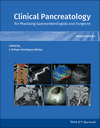Treatment and Follow-up of Autoimmune Pancreatitis in Clinical Practice
Summary
Autoimmune pancreatitis (AIP) is a unique chronic fibroinflammatory disease of the pancreas characterized clinically by frequent presentation with obstructive jaundice with or without pancreatic mass, histologically by dense lymphoplasmacytic infiltrate and fibrosis, and therapeutically by a dramatic response to corticosteroid therapy. There are two histologically distinct forms, type 1 and type 2, which have the distinct clinical phenotype. Pancreatic imaging abnormities are seen in up to 85% of patients with AIP. Subsequent follow-up monitors development of exocrine and endocrine insufficiency and treatment-related complications while maintaining disease remission and ensuring that there is no evidence of malignancy. Providers managing AIP needs to have a clear understanding of the terms used to describe treatment goals and responses in the management algorithm of AIP. Diagnosis of AIP is based on five cardinal features, including histology, imaging, response to steroids, other organ involvement, and serology.



